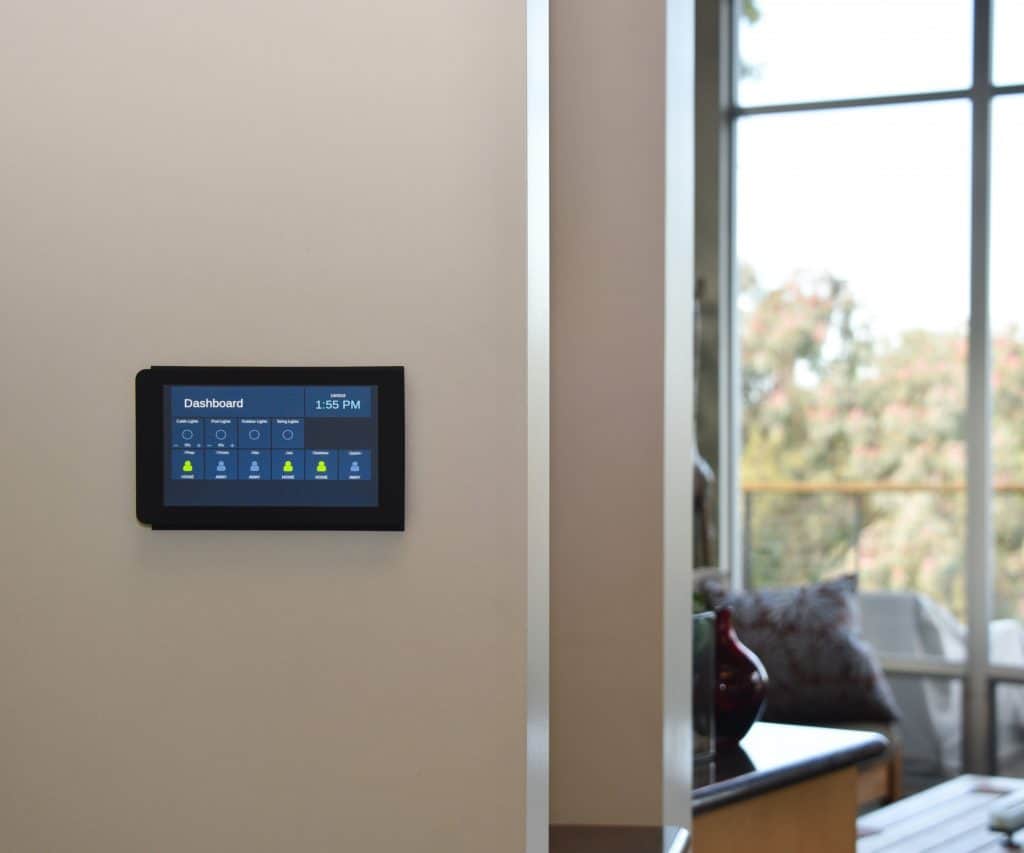For many people, a wall-mounted tablet running a home dashboard is usually the centerpiece of their home automation setup. Today there are many software options that can help you create the ultimate dashboard. In this post, I will look at three examples from a simple pre-built option to a fully custom dashboard.
1. Pre-built dashboard: DAKBoard
I started looking at DAKBoard for the first time a few years ago and I really liked the simplicity of having all integrations and templates pre-built. You use DAKBoard’s website to create your dashboard layout, link all necessary integrations, and then expose it to your target screen using a simple URL. DAKBoard even offers pre-configured hardware packages either with LCD screens (starting at $379) or without LCD screens (i.e., using your existing monitor, starting at $99).
The breadth of existing integrations should be more than enough for most users. You can expose among others:
- Calendars (Google Calendar, Outlook 365, iCloud etc.)
- Photos (Google Photos, Reddit, Dropbox, Instagram, Apple Photos etc.)
- Thermostat controls (Nest, Ecobee)
- Weather
- News and stocks information
- Air Quality
- Traffic information
- and many others…
You can also configure fonts, colors, add custom messages, and videos. DAKBoard has a free plan that allows you to choose from some basic integrations and pre-defined layouts, but ultimately most users will probably need the Essential plan ($5/month) to fully leverage DAKBoard’s capabilities.
I think DAKBoard is a great option that will work for 90%+ of users who want a solution that works out of the box. For this convenience, you have to pay a monthly fee, but running all of these cloud integrations is not free either, so I think $5/month is a fair price to pay.
2. Self-hosted version: Magic Mirror
Magic Mirror is an open-source modular smart mirror platform with a large number of community-developed modules. The system was built primarily for Raspberry Pi hardware that you can easily stash behind your “magic mirror” or in fact any other LCD screen. The community around Magic Mirror is really what makes this project interesting. You can find all types of modules from pretty standard integrations all the way to very niche use cases:
- Camera feed
- Gmail feed
- Soccer live scores
- Public transportation schedule
- Glucose meter readings
- Jeopardy questions
You still have to follow some basic template rules, but clearly this option provides a lot more freedom than DAKBoard if you are willing to invest the time upfront. Take a look at the video below for more ideas.
3. Fully custom: Home Assistant
If you want to build a fully custom dashboard without any constraints on the format, code, or integrations, you should consider using Home Assistant on the backend. There are a number of community plugins (e.g., Custom Header) that allow you to hide the default Lovelace UI components and activate Kiosk mode, the rest is basically on you and your CSS skills. You can get some inspiration here by at some of the best Home Assistant dashboards out there.
Have you built your own dashboard? What software are you using? Please feel free to share your projects in the comments section.
